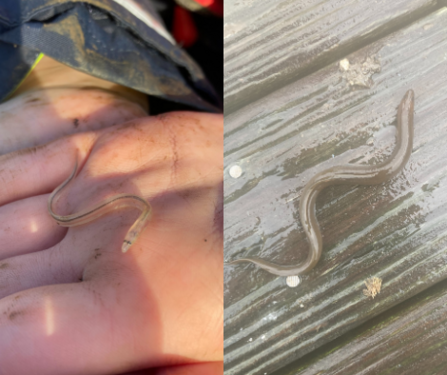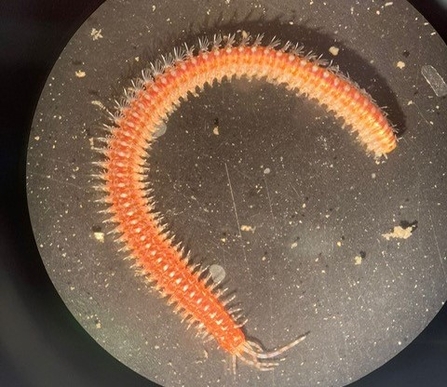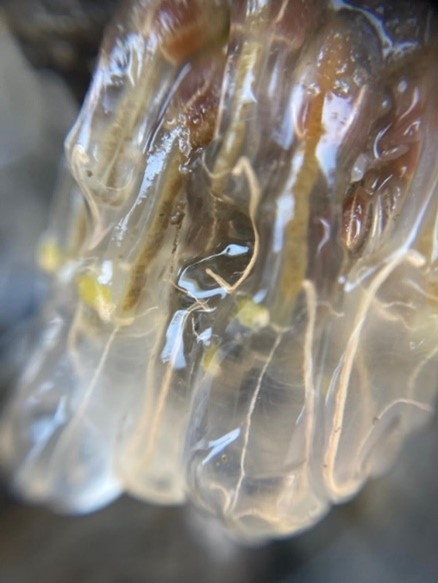Belfast Harbour
Our newest nursery at Belfast Harbour was installed in November 2023 and, since then, we have had several unexpected yet exciting sightings of Anguilla Anguilla, the critically endangered European eel. These rare creatures are found in the rivers and estuaries that they must traverse on their return from their spawning grounds in the Sargasso Sea, in the west Atlantic. We have been lucky enough to see them during two different stages of their life cycle: the ‘glass eel’ in January and February, as well as the ‘elvers eel’ in June and July.
In June, we held training sessions for new volunteers, who then dedicated their summer months to recording vital native oyster measurement data. In just three months, the oysters showed a growth rate of 19.44% from 72cm in June to 86cm in September, which is fantastic.




